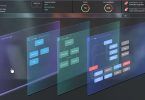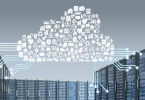Business organizations are rearchitecting their IT infrastructure and applications to overcome the challenges associated with older technologies. Instead of developing monolithic software tightly coupled with on-premises hardware that needs to be carefully managed to avoid unpredictable outages and performance downtime, organizations are turning to containerization and microservices that can run application components independent of the underlying hardware and external dependencies. The container acts as a bubble, where application components are packaged with all libraries, dependencies, and configuration files required to run a fully functional and portable computing environment.
This leads to a greater observability challenge for infrastructure and operations (I&O) teams: consumption far exceeds infrastructure budgets due to inadequate visibility into containerized systems. With a deluge of containers and infrastructure management tools spread across a large system, how do you keep track, process, and control the performance states of each application component and the wider infrastructure and consolidated system?
Combining Observability and Artificial Intelligence
Observability refers to the ability to infer the internal states of a system from its external outputs. In the context of distributed cloud computing, observability tools process log metrics data generated across the nodes of a networked system to trace an event to its origin. Observability is different from monitoring in that the latter uses an alert mechanism based on predefined and pre-configured rules. Unlike a monitoring scenario where metric thresholds can be directly attributed to potential events, observability takes a deeper perspective into gaining insights and understanding network behavior and application performance.
Modern observability tools are data-driven and rely on advanced artificial intelligence and machine learning (AI/ML) algorithms to classify events based on patterns hidden within network log big data. AI enhances observability capabilities to deliver predictable IT service outcomes in the following ways:
- Modeling system behavior and dynamic services: Instead of manually creating relationships between configuration items across services and application components, an AI model can learn to model the system and its associated relationships. Once the model is trained to accurately emulate system behavior, the insights within new log metrics and changing system behavior can be mapped to system performance, identifying relationships, and discovering dependencies for observability use cases.
- Adaptable learning and observability: As new containerized services are created, new configuration items may be dynamic and temporal—any dependencies could hold for a specified and unknown duration and cause significant impact to system performance. AI models can be trained dynamically, online, and on the fly as new metrics data is generated. This ensures observability while considering the changing system dynamics and therefore, accurate observability analysis.
- Large-scale and complex analysis: Observability analysis involves the processing of log metrics from an ever-growing stream of information generated across the IT network. The parameters, relationships, and dependencies that affect each service and IT system grow exponentially, spreading across on-premises and cloud environments. Using fragmented infrastructure and application performance monitoring tools to keep track of all assets spread across the IT network is daunting at best. AI automates the process of collecting relevant metrics, discovering assets, and applying configuration changes automatically based on predefined organizational policies.
- Cost optimization: With the growing number of container deployments, it gets challenging to keep track of container performance without an extensive and automated observability pipeline. AI technologies allow I&O teams to understand the true cost of distributed services and containerized infrastructure components with analysis of aggregated logs and traces that account for every component. AI models recognize where container deployments are over-provisioned and manage resources optimally as required. Therefore, infrastructure costs can be validated by consumption data and optimized based on the changing needs of Devs and QA teams.
- Root cause analysis: The AI-enabled observability pipeline allows you to gain insights into the behavior of your IT system and ask “what-if” questions about how the system behaves with respect to changing dynamics, including introduction of new services, relationships, and configuration changes. This leads to faster debugging, root cause analysis, and proactive identification of potential impact before the incident spreads across the network.
- Intelligent automation and integration: One of the most important tasks in generating accurate observability analysis is to collect data and integrate resource management across decoupled sources and tools. When I&O teams operate an observability pipeline that decouples the tools from the source of data, they can process metrics data separately, integrate the growing number of data sources, and use AI technologies to perform the necessary analysis. As a result, the task of problem identification and incident management can also be automated, and the integrated set of data assets can enable intelligent automation for application performance and infrastructure management tasks.
- User experience improvements: AI models can be used to prioritize changes based on immediate customer feedback. By running observability data through the AI models, organizations can understand how specific system parameters, services, configuration changes, and performance metrics impact the end-user experience. The entire process can be automated for real-time analysis of system performance and to continuously make changes that generate improved value streams for the business and end-user.
With large-scale organizations increasingly investing in containerized technologies to improve the end-user experience, speed software development lifecycles, and improve the quality of software releases, I&O leaders are reevaluating the viability of traditional observability tools to effectively manage infrastructure operations. By combining advanced AI capabilities and observability, these organizations can gain insights into how complex infrastructure systems behave to help their IT teams optimize cost and infrastructure performance.






